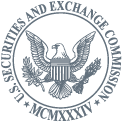The SEC values independent,
high-quality assessments of its
performance against its goals and
desired strategic objectives. Such
assessments help gauge our progress so
we can take action, as needed, to
refine our programs or allocate
resources accordingly. Various audits,
studies, and evaluations of SEC
programs and securities
industry-related issues have been
completed since the release of the
agency’s previous Strategic Plan, and
these have served as an important
resource in the development of this
Strategic Plan. In particular, the SEC
considered the findings from
independent audits of the agency’s
performance conducted by the SEC’s
Office of Inspector General and the
Government Accountability Office. The
SEC also considered the results of
internal assessments and evaluations
of the agency’s performance, including
those reported in the agency’s most
recent Annual Performance Report. Over
the next four years, the SEC will
continue to draw on evaluations from a
variety of sources to improve its
programs.
In developing the Strategic Plan, the
SEC took into account the information
gleaned from meetings with the many
internal and external parties with
which the agency interacts on a
regular basis, including members of
Congress and congressional committees,
investors, businesses, financial
market participants, academics, and
other experts and stakeholders. This
includes formal outreach efforts
through the SEC’s advisory committees;
Commission-sponsored roundtables
focused on specific issues; the
agency’s Annual Government-Business
Forum on Capital Formation; the SEC’s
annual conference with the North
American Securities Administrators
Association; and solicitations of
public comments on Commission rule
proposals.
While the initiatives outlined in this
Strategic Plan are intended to address
its top priorities over the next four
years, it must be mentioned that there
are, of course, risks to, and
limitations on, the SEC’s ability to
achieve its strategic goals. Some of
these risks and limitations are
operational in nature, such as those
pertaining to key technology systems
or oversight of outside vendors who
support SEC programs, while other
risks result from external sources
such as new forms of fraud, evolution
of financial products, or changes to
funding levels and the availability of
qualified personnel. Accordingly, the
SEC continues to build its enterprise
risk management program, supported by
representatives from SEC divisions and
offices, to strengthen its ability to
proactively identify, assess, and
mitigate risks to attaining its
mission.
Modified: April 6, 2023
